Last updated on February 28, 2024
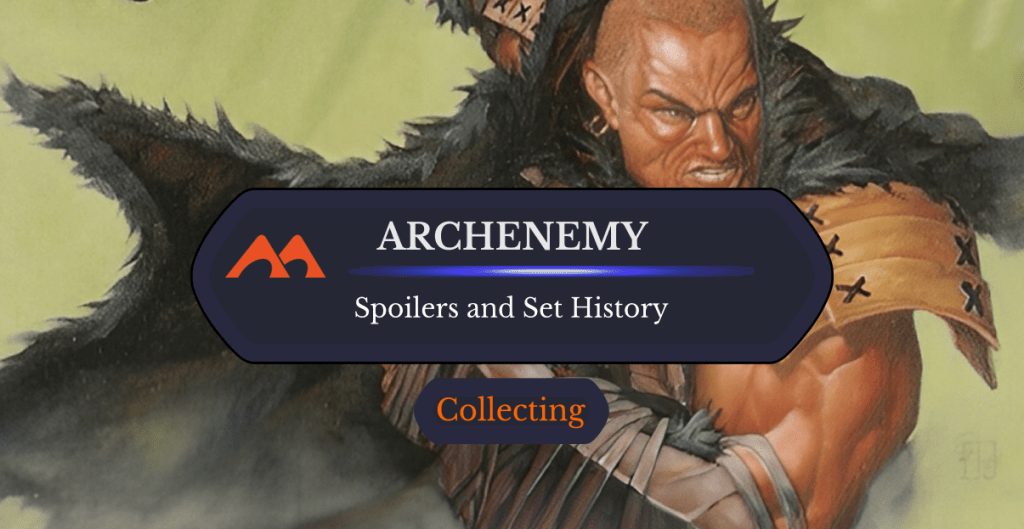
Kamahl, Fist of Krosa | Illustration by Matthew D. Wilson
MTG players yearn for new formats almost daily. Exhausted with Commander or turned off by competitive formats, many have started looking back in time for a new casual, multiplayer Magic experience. The recent return of Planechase oversized cards has many players wondering what other oversized formats Magic has to offer.
2009’s Planechase was only the beginning. The following year, the original Archenemy theme decks hit the scene, introducing schemes, a new type of oversized card for multiplayer games. Let's take a look!
Archenemy Set Details
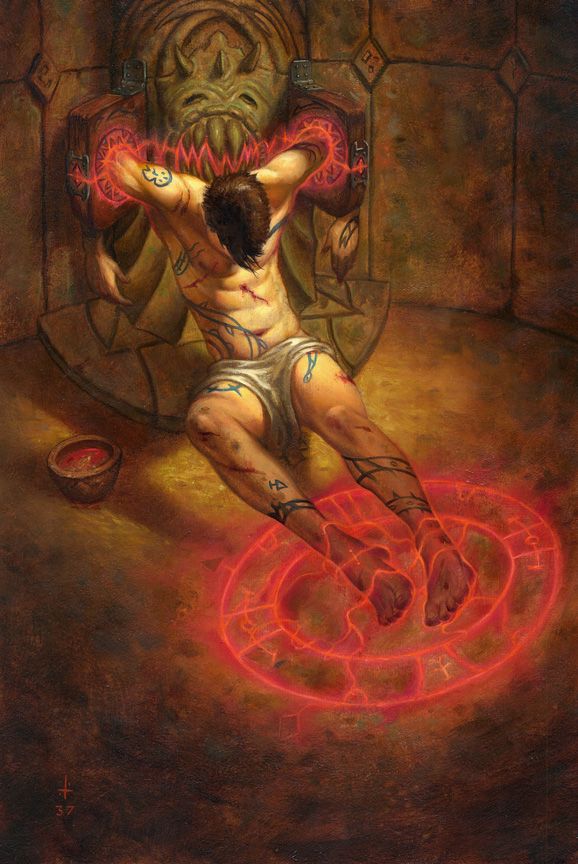
Imprison This Insolent Wretch | Illustration by Jim Pavelec
| Set Symbol |  |
| Set Code | ARC |
| Number of Cards | 195 (150 + 45 Oversized Scheme cards) |
| Rarities | 67 commons (14 basics), 51 uncommons, 32 rares, 45 oversized cards |
| Mechanics | Schemes (“Set in Motion” and “Abandon”) |
Archenemy introduced the multiplayer format of the same name. It consisted of “game packs” with four 60-card theme decks and 20 oversized scheme cards in each.
Games of Archenemy are “many-vs-one” style multiplayer Magic games, where one player takes on the role of the Archenemy and uses a deck of at least 20 scheme cards with powerful effects. The scheme deck can only contain up to two copies of each scheme, but otherwise it's built like a regular deck and shuffled before the game. The Archenemy begins the game with 40 life and always takes the first turn.
At the beginning of the Archenemy’s precombat main phase, they reveal the top card of their scheme deck and “set it in motion” by placing it in the command zone. Schemes operate similarly to emblems, in that they can't be targeted or removed in any way. Most schemes have a triggered ability when they’re set in motion. Ongoing schemes remain in play with a static effect, usually with instructions on when to “abandon” it.
Abandoning a scheme places it on the bottom of the scheme deck, which is never shuffled once the game starts. The Archenemy wins if the entire opposing team is defeated, and the team of players wins if the Archenemy is defeated, regardless of if any individual player has lost. Players can block for each other like in Two-Headed Giant, but each maintains a separate life total.
The format is typically played with a single scheme deck, but each player could be the Archenemy in a “Super Villain Rumble” format as well.
When Did Archenemy MTG Come Out?
The first Archenemy set was released on June 18, 2010.
Assemble the Doomsday Machine

Creatures (14)
Architects of Will
Duplicant
Ethersworn Shieldmage
Juggernaut
Leonin Abunas
Lodestone Golem
Magister Sphinx
Master Transmuter
Memnarch
Metallurgeon
Sanctum Gargoyle x2
Sundering Titan
Synod Centurion
Instants (5)
Agony Warp x2
Batwing Brume
Spin into Myth
Unmake
Artifacts (16)
Aether Spellbomb x2
Azorius Signet
Dimir Signet
Dreamstone Hedron
Everflowing Chalice
Fieldmist Borderpost
Lightning Greaves
Mistvein Borderpost
Obelisk of Esper
Skullcage
Sorcerer's Strongbox
Sun Droplet
Synod Sanctum
Thunderstaff
Unbender Tine
Enchantment (1)
Lands (24)
Island x10
Plains x7
Swamp x5
Terramorphic Expanse x2
Schemes (20)
All in Good Time
Behold the Power of Destruction
Embrace My Diabolical Vision
Feed the Machine x2
I Delight in Your Convulsions
I Know All, I See All x2
Ignite the Cloneforge! x2
Introductions Are in Order
My Genius Knows No Bounds
Nothing Can Stop Me Now
Realms Befitting My Majesty
The Iron Guardian Stirs x2
The Pieces Are Coming Together x2
Your Fate Is Thrice Sealed
Your Puny Minds Cannot Fathom
Theme and Strategy
Assemble the Doomsday Machine is an Esper () artifacts deck. It mixes Mirrodin and Alara block artifacts to pressure opponents with Juggernauts and punishes them with Lodestone Golem. Sanctum Gargoyle, Leonin Abunas, and Metallurgeon help keep your artifacts around, protecting your mana rocks until you can cast a Sundering Titan or Magister Sphinx to really threaten your foes.
The schemes in this deck fill in the gaps in its strategy. Assemble the Doomsday Machine lacks consistent card draw and removal, so it makes good use of schemes like My Genius Knows No Bounds and Behold the Power of Destruction. The Pieces Are Coming Together is one of the best schemes you can pull off the top, guaranteed to make this deck pop off.
The Verdict
Assemble the Doomsday Machine hits the mark for being a villainous deck themed around artifacts, but its “bombs” aren’t my personal favorites. Sundering Titan leaves a bad taste in my mouth, and Magister Sphinx is a little played out at this point.
- Archenemy gives you everything you need to play a new casual variant of the same name.
Trample Civilization Underfoot
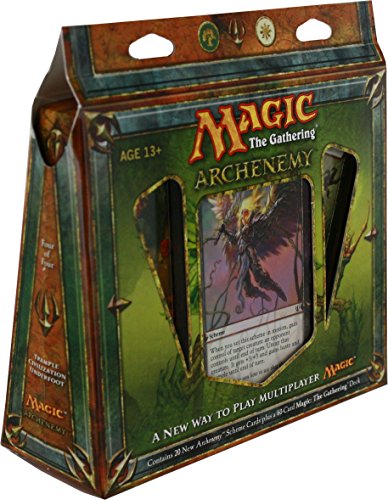
Creatures (23)
Feral Hydra
Fertilid x2
Forgotten Ancient
Hunting Moa
Kamahl, Fist of Krosa
Krosan Tusker
Leaf Gilder
Molimo, Maro-Sorcerer
Pale Recluse
Sakura-Tribe Elder x2
Selesnya Guildmage
Shinen of Life's Roar
Thelonite Hermit
Verdeloth the Ancient
Wall of Roots x2
Watchwolf
Wickerbough Elder x2
Yavimaya Dryad x2
Instants (5)
Fog
Heroes' Reunion
Path to Exile
Plummet
Wax // Wane
Sorceries (3)
Gleeful Sabotage
Harmonize
Primal Command
Enchantments (5)
Armadillo Cloak
Oblivion Ring x2
Rancor
Spider Umbra
Lands (24)
Forest x10
Graypelt Refuge
Khalni Garden
Krosan Verge
Llanowar Reborn
Mosswort Bridge
Nantuko Monastery
Plains x5
Secluded Steppe
Tranquil Thicket
Vitu-Ghazi, the City-Tree
Schemes (20)
Every Last Vestige Shall Rot x2
Evil Comes to Fruition
I Call on the Ancient Magics
I Delight in Your Convulsions
Into the Earthen Maw
Introductions Are in Order
May Civilization Collapse
Nature Demands an Offering x2
Nature Shields Its Own x2
Realms Befitting My Majesty
Roots of All Evil x2
The Very Soil Shall Shake
Your Fate Is Thrice Sealed
Your Puny Minds Cannot Fathom
Your Will Is Not Your Own x2
Theme and Strategy
Every precon release needs a good old-fashioned aggro deck for the Timmy players, and Trample Civilization Underfoot was Archenemy’s Selesnya () aggro deck. It’s allegedly focused on mana ramp and cards that have or give trample.
Despite this claim on the deck’s strategy insert, there are only a measly three cards in the main deck that mention the word “trample,” and Kamahl, Fist of Krosa is the only creature. Because of this, Trample Civilization Underfoot uses its scheme deck to buff up its creatures rather than wasting time digging for that single copy of Rancor.
The Very Soil Shall Shake is a great anthem for this deck, turning all those 1/1 Saprolings and 0/1 Plant tokens into attackers, or pushing Molimo, Maro-Sorcerer over the edge. Like the others, much of this deck’s interaction and ramp is relegated to its scheme cards, so it’s main sources for card draw and land tutors are Your Puny Minds Cannot Fathom and Realms Befitting My Majesty.
The Verdict
Trample Civilization Underfoot does what it promises, but it really needs the schemes to keep pace. When this deck isn’t playing the Archenemy, I foresee it struggling to actually ramp into the big creatures it wants to play, and whiffing with anthems as it struggles to create enough Saproling and Plant tokens to function. However, the Path to Exile, Wax // Wane, Plummet, and two Oblivion Rings actually give this deck access to more single-target removal than any other.
Scorch the World with Dragonfire

Creatures (19)
Battering Craghorn
Chameleon Colossus
Dragon Whelp x2
Dragonspeaker Shaman x2
Fierce Empath
Flameblast Dragon
Furnace Whelp x2
Gathan Raiders
Hellkite Charger
Imperial Hellkite
Kilnmouth Dragon
Ryusei, the Falling Star
Skirk Commando
Skirk Marauder
Taurean Mauler
Two-Headed Dragon
Instants (7)
Branching Bolt x2
Chandra's Outrage
Colossal Might
Seething Song x2
Volcanic Fallout
Sorceries (5)
Breath of Darigaaz
Dragon Fodder x2
Fireball
Savage Twister
Enchantments (2)
Dragon Breath
Fires of Yavimaya
Artifact (3)
Lands (24)
Forest x5
Kazandu Refuge x2
Mountain x17
Schemes (20)
All Shall Smolder in My Wake x2
Approach My Molten Realm
I Bask in Your Silent Awe x2
I Delight in Your Convulsions
Introductions Are in Order
Know Naught but Fire
Look Skyward and Despair x2
My Crushing Masterstroke
My Wish Is Your Command x2
Realms Befitting My Majesty
The Fate of the Flammable
Tooth, Claw, and Tail
Which of You Burns Brightest? x2
Your Fate Is Thrice Sealed
Your Puny Minds Cannot Fathom
Theme and Strategy
Scorch the World with Dragonfire is a Gruul () deck themed around dragon creatures and burn spells. If you’ve been playing Magic for a while, you’ll no doubt recognize the classic Dragonspeaker Shamans and Furnace Whelps, as well as Hellkite Charger and Ryusei, the Falling Star.
The scheme cards in this deck revolve around destroying permanents, dealing damage, and getting those big dragons on the field. Like Trample Civilization Underfoot, this dragon deck relies on its schemes to ramp its mana or to deal big damage, making use of Which of You Burns Brightest?, Your Fate Is Thrice Sealed, and Look Skyward and Despair to keep the pressure on your opponents and prevent them from building up their board.
The Verdict
Scorch the World with Dragonfire suffers from the same problem that most dragon-tribal precons do: the omission of the most powerful dragons. Though there were no Utvara Hellkites or Lathliss, Dragon Queens flying around at the time, I would’ve liked to seen this deck splash into black to play Hellkite Overlord, or even just the inclusion of a Dragon Broodmother. All that said, this deck does come with the best scheme cards from the original Archenemy set, My Crushing Masterstroke and Tooth, Claw, and Tail.
Bring About the Undead Apocalypse

Creatures (20)
Artisan of Kozilek
Avatar of Discord
Avatar of Woe
Bog Witch
Cemetery Reaper
Corpse Connoisseur
Dregscape Zombie
Extractor Demon
Festering Goblin
Infectious Horror x2
Kaervek the Merciless
Rakdos Guildmage
Reassembling Skeleton
Scion of Darkness
Shriekmaw
Twisted Abomination x2
Urborg Syphon-Mage
Vampiric Dragon
Instants (5)
Bituminous Blast
Inferno Trap
Makeshift Mannequin
Terminate x2
Sorceries (8)
Beacon of Unrest
Incremental Blight
Infest
Reanimate
Sign in Blood x2
Torrent of Souls
Zombify
Enchantment (1)
Artifacts (2)
Lands (24)
Barren Moor x2
Mountain x7
Rakdos Carnarium x2
Swamp x13
Schemes (20)
A Display of My Dark Power
Choose Your Champion x2
Dance, Pathetic Marionette
Every Hope Shall Vanish x2
I Delight in Your Convulsions
Introductions Are in Order
Mortal Flesh Is Weak
My Undead Horde Awakens
Only Blood Ends Your Nightmares x2
Realms Befitting My Majesty
Rotted Ones, Lay Siege x2
Surrender Your Thoughts
The Dead Shall Serve x2
Your Fate Is Thrice Sealed
Your Puny Minds Cannot Fathom
Theme and Strategy
Bring About the Undead Apocalypse is a Rakdos () deck centered around the graveyard and reanimation effects. It’s a zombie tribal deck punctuated with some decidedly non-zombie cards to round out its strategy. Open up with Festering Goblin and Reassembling Skeleton for some cheap blockers, use Bog Witch and Avatar of Discord to fill up your graveyard with powerful creatures, then return them to the battlefield with Zombify, Beacon of Unrest, or my personal favorite “huge design mistake,” Reanimate. The schemes make up for a lack of reanimation effects by stealing your opponents’ creatures with Dance, Pathetic Marionette, My Undead Horde Awakens, and The Dead Shall Serve.
The Verdict
For an MSRP of only $19.99, this deck’s a steal just for its single copy of Reanimate (you won’t find a sealed copy for $20 anymore, though). Personally, I like this deck. I think it most closely resembles the library of spells that an arch-villain would use, and its prebuilt scheme deck seems like it’ll play the best against a team of three players. With a handful of removal effects spread between the main deck and the schemes, you’re certain to have your choice of a wide array of creatures from your opponents’ graveyards.
Notable Cards
Promotional Schemes
- Drench the Soil in Their Blood
- Imprison This Insolent Wretch
- Perhaps You've Met My Cohort
- Plots That Span Centuries
- Your Inescapable Doom
Five promotional scheme cards were released via the DCI at Archenemy release events in 2010. Those five cards are not found in any of the original Archenemy theme decks and have yet to be reprinted.
Wrap Up
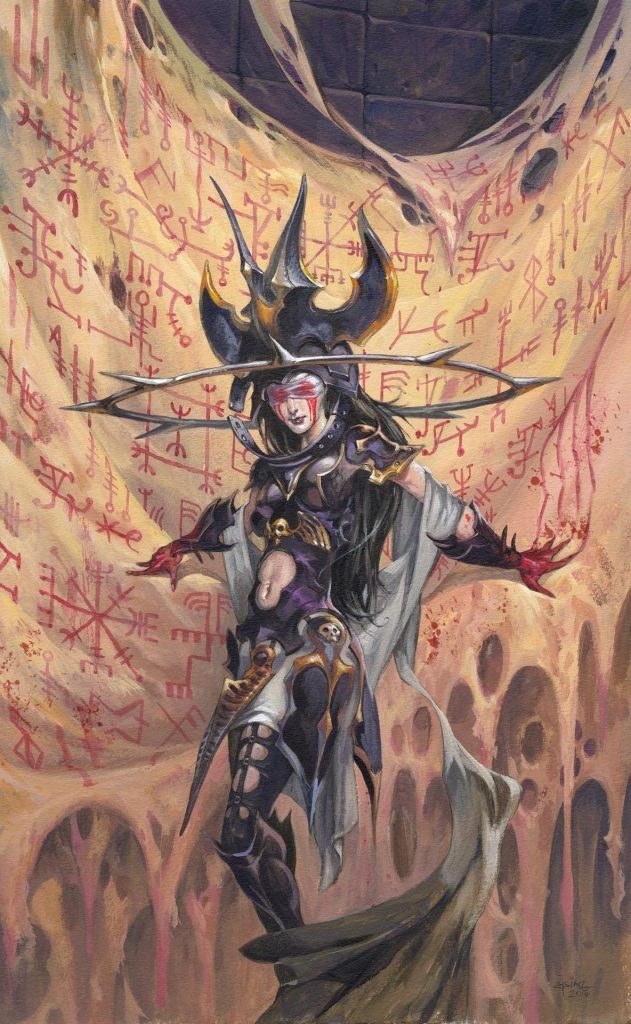
Plots That Span Centuries | Illustration by Jesper Ejsing
As a format, Archenemy rated below both Commander and Planechase in popularity by the time it was two years old. While it's probably the least played of the Oversized formats, it was still considered a hit with its intended audience, namely dorks like me who love a flavorful and casual game of Magic. I encourage you to give this odd format a chance when you find yourself burnt out on Commander!
How would you design an Archenemy set? What themes would you build the decks around? And what sort of effects would you like to see on a new set of scheme cards? Let me know in the comments below, or over on Draftsim’s Twitter or Discord.
Thanks for reading, stay villainous!
Note: this post contains affiliate links. If you use these links to make a purchase, you’ll help Draftsim continue to provide awesome free articles and apps.
Follow Draftsim for awesome articles and set updates:



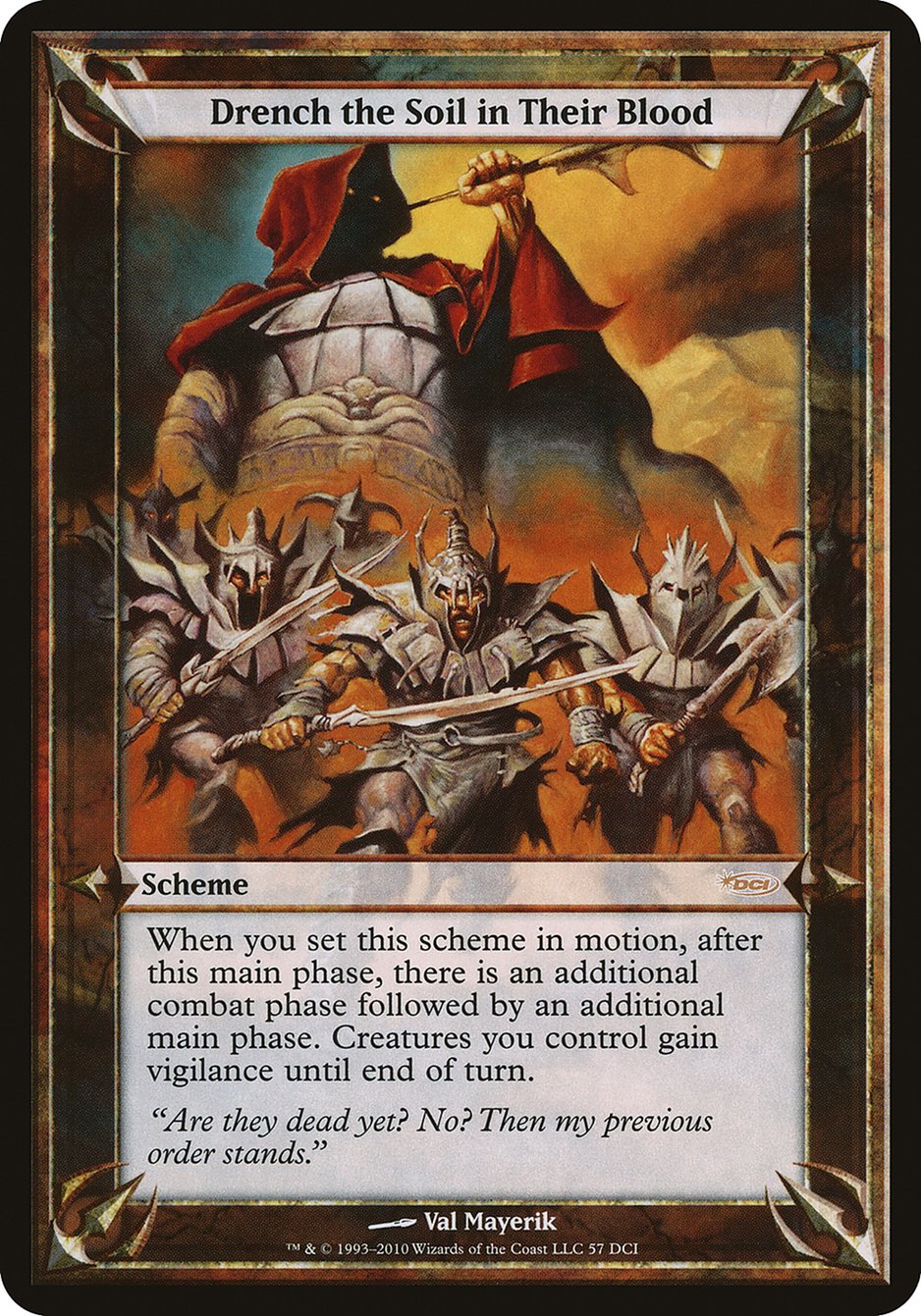



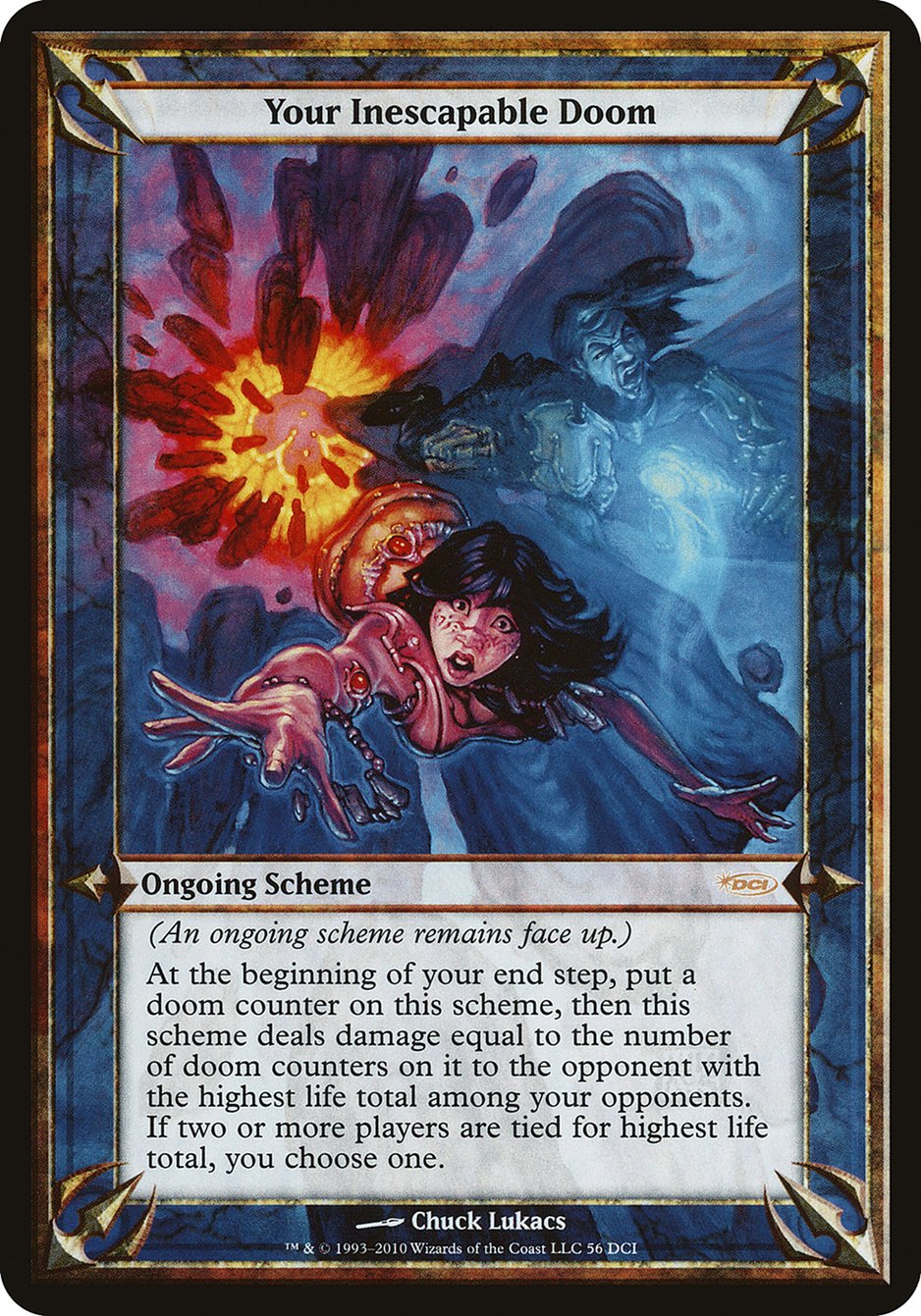


Add Comment